Colors in the Workplace: Leveraging Office Color Psychology
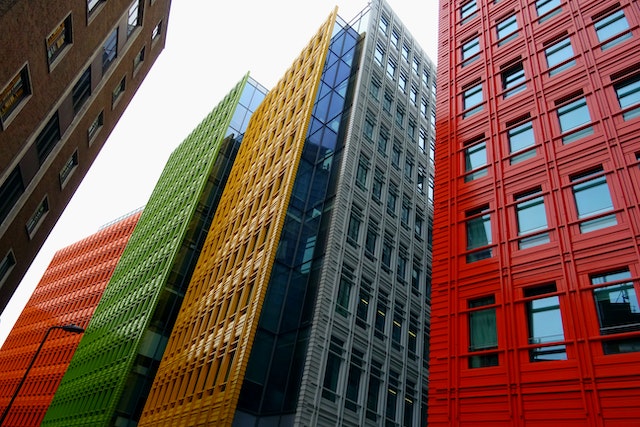
The use of color in an office space has a significant impact on the atmosphere of the workplace and on those that occupy it. The right combination of colors can enhance the overall design, improve the functionality of the space, and create a more positive and productive work environment.
According to the Institute for Color Research, within 90 seconds of first viewing, people make a subconscious judgement about a space or a product, and between 62% and 90% of that evaluation is based only on color. Additionally, in a ground-breaking study, the University of Texas discovered that when presented with different colors, varying brain responses can affect employee productivity and attitude.
In this article, we will discuss the power of color in offices by delving into the evidence surrounding color psychology, and the impact lighting and materials have on color, and how this should combine to be applied to office design. So, after reading, office interior designers, occupiers and landlords should gain some insight into how to use color to enhance the overall design of spaces, and improve the functionality and productivity of the office environment.

Contents
The Psychological Impact of Color
The use of color in an office space will also have a psychological impact on employees and visitors. Different colors evoke different emotions and physiological responses, which can affect the overall mood and atmosphere of the office. For example, colors like red or yellow can create a sense of energy and excitement, and additionally raise blood pressure. Conversely, a cooler, soothing color like blue or green can create a sense of calm and tranquility, and resultantly serve to calm blood flow.
A report by the University of Munich showed that when employees are exposed to even a brief look at green, for instance, there can be a consequent increase in performance on creativity tasks. Cooper’s Human Spaces report on color psychology additionally found that when you introduce green, light blue, and yellow to a workplace, there is a causal link to increased productivity and creativity.
It is clear that different colors have varied effects on people, though this does tend to vary by geographical region. For instance, employee satisfaction in Canada is predicted by shades of light to dark purple in their work environment, while in China it is predicted by prevalence of brown shades.
Incorporating colors that promote positive emotions and feelings will further help to create a more productive and positive workspace. For example, using an accent color green or bright blue in common areas and workspaces helps to create a sense of calm and serenity, which can reduce stress and improve concentration. Additionally, using brighter colors like splashes of red and yellow in break rooms and lounge areas evokes an energetic buzz, which can promote social interaction and collaboration among employees.
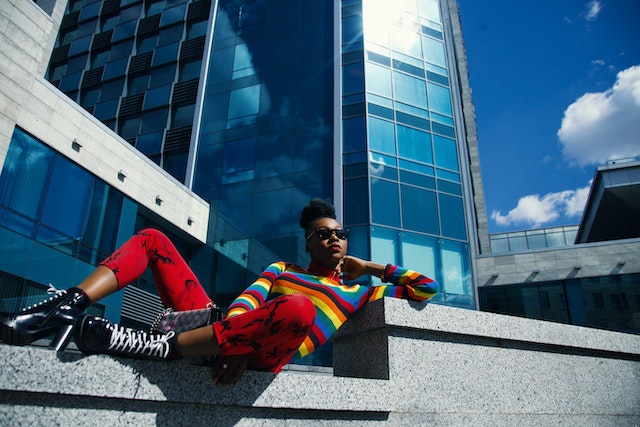
The Impact of Natural Light
According to a Cornell study, problems including headaches, eye strain, high blood pressure, and blurred vision decreased by 84 percent for workers who were exposed to natural light. Workers exposed to less sunlight were more vulnerable to various health problems, since such symptoms can contribute to increased weariness.
When designing an office, it’s important to consider the impact that lighting has on the colors used in the space, too. Natural lighting affects the way colors appear, making them appear brighter or more muted depending on the time of day and the direction of the light. For instance, colors that appear vibrant and bold in the morning may appear more muted in the afternoon. Therefore, it’s imperative to consider the availability of sunlight in the office when selecting colors for walls, floors, and furniture.
One way to enhance the natural lighting proliferation in an office is to use lighter colors on walls, floors, and ceilings. Light colored surfaces reflect more light than dark surfaces, making the space appear brighter and more open. Moreover, using lighter colors on walls can also help to create the illusion of depth, making a space appear larger and more spacious.
Using colors that complement the available sunlight in the office can also help to enhance the overall design. For example, using cool colors like blue and green in a room with a lot of natural light creates a soothing and relaxing atmosphere, while using warm colors like red and yellow in a room with less sunlight creates a more cozy and inviting atmosphere. By using colors that complement the natural lighting, office interior designers are able to enhance the overall design and improve the usability and efficiency of the working environment.
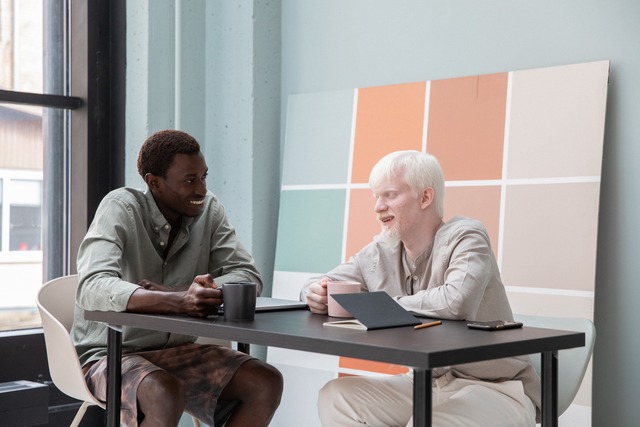
The Use of Natural Materials
Regarding the inclusion of natural materials in office design, Bill Browning, a founding partner of Terrapin Bright Green, a US-based environmental consulting and strategic planning firm, says “We find that natural materials can have an impact. Natural materials have layered fractal patterns within them,” breaking up the appearance of otherwise monotonous and clinical in-office surfaces.
So, another strategy for maximizing the effects of color in an office is to incorporate natural materials, such as wood and stone, to enhance the overall design and boost productivity and well being of employees. Wooden elements, such as floors and furniture, bring warmth and texture to the office, while stone elements, such as flooring and countertops, bring durability and longevity. These materials can create a calming and comfortable atmosphere, connecting employees with the natural environment and reducing stress levels.
Incorporating natural materials into an office design can greatly improve the overall aesthetic and functionality of the space. A well-designed office that includes natural materials can promote well being, reduce stress levels, and create a comfortable and inviting atmosphere for employees. By using natural materials, office interior designers can create a space that is both practical and aesthetically pleasing, enhancing the design and improving the usability and productivity of an office space.
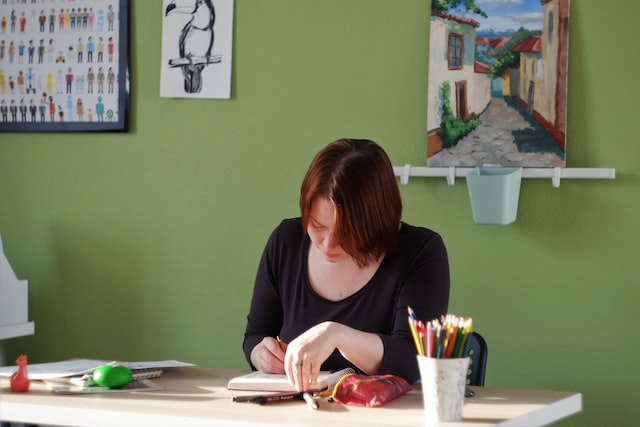
Color Schemes and the Specific Functions of Different Areas
It’s important to consider the specific functions of different areas of the office when selecting colors. For instance, using cool colors in conference rooms helps to create a sense of significance and professionalism, while choosing a warm color palette in reception areas promotes an atmosphere of welcoming and friendliness.
Many creative workspaces choose yellow accents because it is seen as an upbeat color that can spur greater levels of creativity, especially in collaboration areas. However, some color schemes should be used judiciously. White, for instance, can make some rooms appear larger, though it doesn’t mean that every surface throughout an office should be white, since this can evoke feelings of sterility which should be reserved for clinical settings like medical offices. Conversely, using darker shades in a workplace setting, especially if they’re the dominant color, can heighten the calming effect to the point of increasing mental strain and eye fatigue in workers as mental activity diminishes, and they struggle to concentrate on tasks.
By considering the specific functions of different areas of the office, office interior designers use accent color to enhance the overall design and improve the usability and atmosphere of the particular office environment in question.
It’s also important to consider the function of color schemes for different areas of the office. For example, using a monochromatic scheme of lighter shades and neutral colors in a workspace creates a sense of simplicity and order, which can help improve office productivity and concentration. On the other hand, using a non-monochromatic though complementary color scheme – of, say, bright accent color pops of red or bright green – in a breakout space can create a sense of vibrancy, energy and rejuvenation, to encourage social interaction and relaxation.
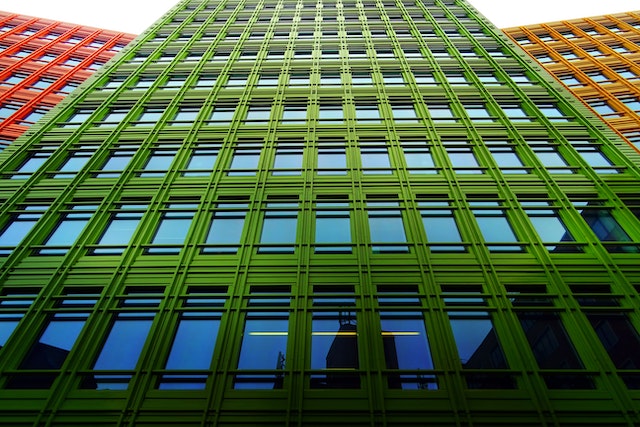
Wrapping Up
Utilizing color in the workplace shouldn’t be limited to simple choices between a neutral color theme or which primary color to choose for a feature wall. Whatever color scheme is chosen will have a significant impact on the overall design, functionality, and productivity of the space. By considering the impact of office lighting (particularly as it pertains to sunlight), incorporating natural materials, understanding the impact of color psychology, and striving to balance colors that are appropriate for the specific functions of different areas within the office, occupants and designers can use color to enhance the overall design and improve the feel and productivity of the office.
With a little bit of creativity and knowledge of the principles of color psychology and design, any office space can be transformed into an inviting, productive and aesthetically pleasing workplace – promoting long-term well being of employees, and wowing clients and visitors.
Looking for Office Space?
Unsure of where to find office space near you? Check out our variety of well-equipped offices in major US cities by clicking here. Contact us at 972-913-2742 for a personalized discussion of your needs, or reach us on Facebook and Twitter.
Further Insights
Want to read up on the US commercial markets and office space topics? Check out recent articles below!
Top Ten Midwest Conference & Convention Centers
New York Central Business District
Get Creative with These 11 Fresh & Fun In-Office Event Ideas
The Top 15 Benefits of Coworking Spaces for Remote Workers
Where are US Citizens Living & Working After COVID?
Here’s the Average Office Worker Salary by Age in 2022
A Full Guide to Commercial Lease Assignment (Lease Transfer)
The Impact of Proptech on Commercial Real Estate
15 In-Person Employee Recognition Ideas for the New World of Work
Coworking Space for Students on U.S. College Campuses
How the Decentralization of Cities Has Changed the U.S. Office Space Market
A Full Guide to LEED Certification